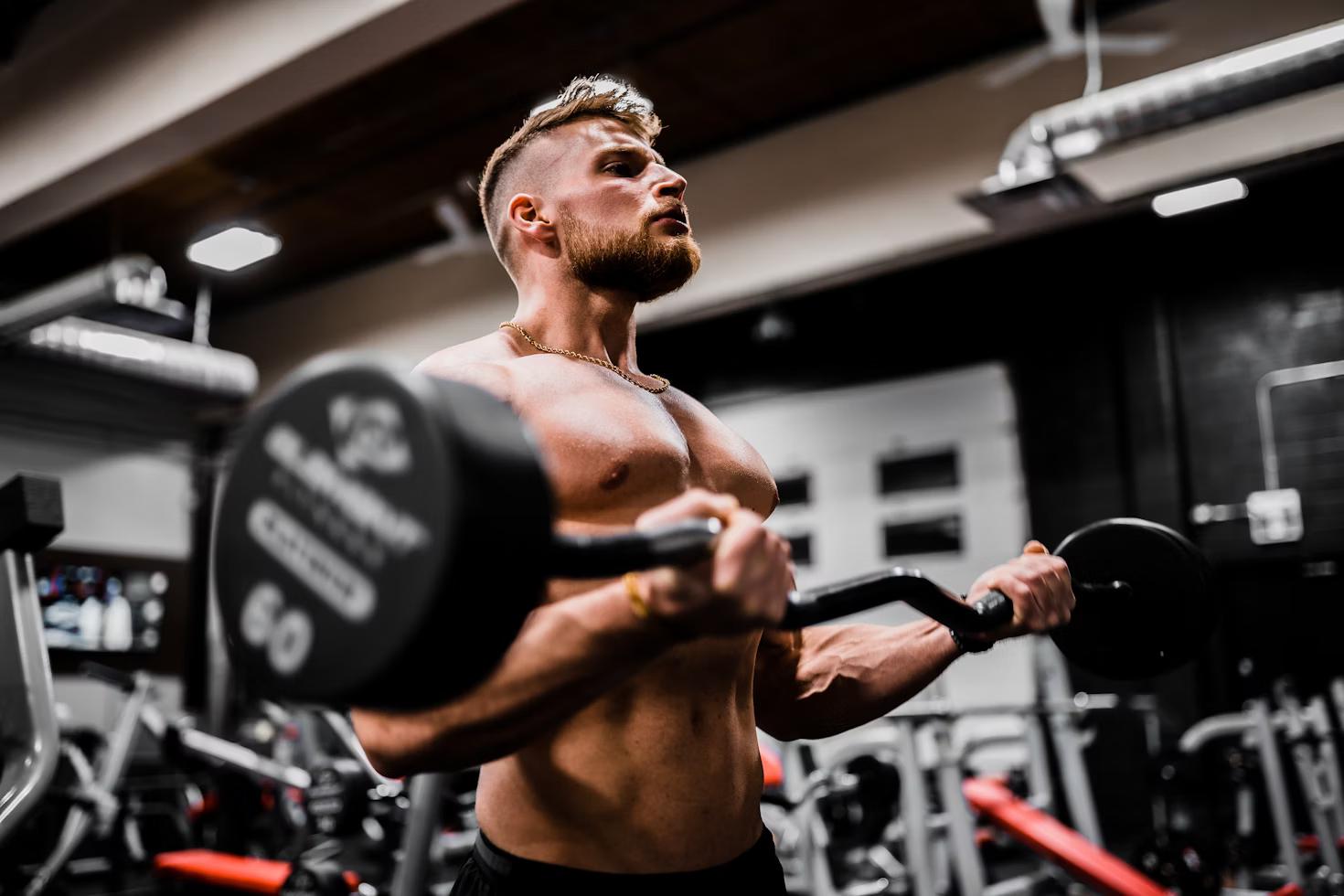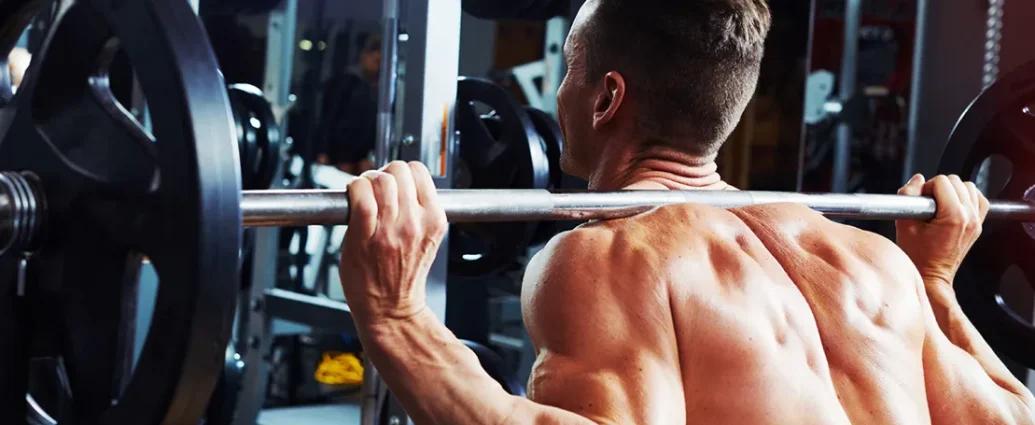Building a strong, well-defined back is a cornerstone of bodybuilding. Not only does it contribute to a more formidable and balanced physique, but it also plays a critical role in promoting overall muscle growth and enhancing strength. The back is a complex muscle group comprised of several key areas, including the latissimus dorsi, trapezius, rhomboids, and erector spinae. Developing each of these areas requires a blend of specific exercises tailored to stimulate muscle growth and strength.
In this guide, we will delve into the most effective back workout routines designed to sculpt a powerful back. These routines will incorporate a mix of compound and isolation exercises aimed at maximizing muscle engagement and promoting hypertrophy. Whether you’re just starting your bodybuilding journey or looking to refine your back workouts, this guide will provide you with the insights and strategies needed to achieve your goals.
Importance of Back Workouts for Bodybuilding:

A well-defined and powerful back is foundational in bodybuilding for both aesthetics and function. The muscles in the back contribute to overall body proportion, posture, and core strength, making back workouts a critical component of any bodybuilding regimen.
Benefits of a Strong Back:
Building a strong back enhances physical appearance by adding to the V-shape torso coveted in bodybuilding. It supports good posture, crucial for presenting a confident stance on and off the stage. Functionally, a strong back underpins performance across a range of exercises, reducing the risk of injuries by providing support to the spine during heavy lifts.
How Back Workouts Enhance Overall Muscle Growth?
Incorporating back exercises into your routine stimulates the release of muscle-building hormones. Compound movements like deadlifts, which engage the back, also involve other muscle groups, leading to an integrated workout that boosts overall muscle growth. Additionally, a strong back provides the necessary stability for performing exercises targeting other muscle groups, thus enhancing their effectiveness and leading to balanced muscle development.
Types of Back Exercises:
- Pull-ups and Chin-ups
Pull-ups and chin-ups are quintessential back-building exercises, targeting the upper lats and contributing to the development of a wide upper back. Pull-ups use an overhand grip and focus more on the upper lats, whereas chin-ups employ an underhand grip, engaging the biceps and lower lats more intensely. These exercises are versatile and can be modified with weights or assistance to match your fitness level.
- Deadlifts
Deadlifts are a powerhouse move that engages the entire back, alongside other muscle groups including the glutes, hamstrings, and forearms. This exercise improves grip strength, posture, and overall muscle mass. The technique is paramount in deadlifts to avoid injury, emphasizing a neutral spine and engaging the core throughout the lift.
- Rows (Barbell, Dumbbell, and Cable)
Rows come in several variations, each targeting the back muscles differently. Barbell rows focus on the upper and mid-back strength, dumbbell rows isolate one side of the back at a time, offering a greater range of motion, and cable rows provide constant tension on the back muscles, enhancing muscle engagement and growth.
- Lat Pulldowns
Lat pulldowns primarily work the latissimus dorsi muscle, contributing to the width of the back. This exercise offers controlled movement, making it easier to focus on muscle engagement and form. It is an essential addition to back workouts, especially for beginners or those needing to isolate their lats without the intensity of pull-ups.
- T-Bar Rows
T-bar rows are effective for targeting the middle back muscles, offering a balance between the range of motion of dumbbell rows and the stability of barbell rows. This exercise allows for the use of heavy weights while maintaining form, promoting both muscle strength and size development.
- Hyperextensions
Hyperextensions focus on strengthening the lower back by engaging the erector spinal muscles. This exercise aids in improving posture and supporting the core, essential elements for lifting heavier weights in other exercises. Hyperextensions can be performed on a hyperextension bench, varying the intensity with added weights or bodyweight alone.
In conclusion, a diverse back workout routine, integrating various exercises targeting different muscles of the back, is key to achieving a solid and well-defined back essential for bodybuilding success. Proper form, consistent training, and gradual progression will contribute to maximizing muscle growth and strength, helping you build the back you aim for in your bodybuilding journey.
The Ultimate Back Workout Routine:
Warm-up Exercises
Before diving into the main back workout, it is essential to engage in a proper warm-up to prepare your muscles and prevent injury. A good warm-up for a back workout starts with 5-10 minutes of light cardio, such as jogging, rowing, or jumping jacks, to increase your heart rate and blood flow to the muscles. Follow this with dynamic stretches that target the back, shoulders, and arms. Examples include arm circles, shoulder shrugs, and torso twists. Taking the time to warm up properly sets the stage for a successful and safe workout.
Main Back Workout Routine
The main back workout routine focuses on muscle growth and strength, incorporating exercises that target the entire back, including the latissimus dorsi, rhomboids, and trapezius muscles. This routine consists of the following key exercises:
- Deadlifts: Start with 3 sets of 6-8 reps. Deadlifts target multiple back muscles and also engage the legs and core, making it an essential compound exercise for bodybuilding.
- Pull-ups: Aim for 3 sets of 8-10 reps. If you’re unable to perform bodyweight pull-ups, use an assisted pull-up machine or resistance bands. Pull-ups primarily work the latissimus dorsi.
- Bent-over rows: Complete 3 sets of 8-10 reps with a barbell or dumbbell. This exercise strengthens the middle and lower back by simulating the pulling motion.
- Lat pulldowns: Do 3 sets of 10-12 reps on a lat pulldown machine, focusing on squeezing your shoulder blades together at the bottom of the movement.
- Seated cable rows: Perform 3 sets of 10-12 reps to target the mid-back muscles. Ensure a full range of motion by fully extending and retracting the arms.
Cool-down Stretches
Ending your workout with cool-down stretches is crucial for recovery and flexibility. Spend 5-10 minutes stretching the muscles you’ve worked. Some effective back stretches include:
- Child’s Pose: Stretch the entire back and shoulders by extending your arms and sitting back on your heels.
- Cat-Cow Stretch: Promotes spinal flexibility and relieves tension in the back and neck.
- Standing Forward Fold: Stretches the back muscles, and hamstrings, and helps release tension in the spine.
Taking time for a thorough cool-down can also help reduce muscle soreness and improve your overall flexibility.
Tips for Maximizing Back Muscle Growth:
Proper Form and Technique
Achieving muscle growth and strength in bodybuilding requires more than just lifting weights; it demands attention to proper form and technique. Incorrect form not only hinders muscle development but also increases the risk of injury. Ensure that you maintain control of the weights throughout each exercise and focus on engaging the back muscles specifically. Using mirrors can help you observe and correct your posture and form as needed.
Progressive Overload
To consistently achieve muscle growth, incorporate progressive overload into your routine. This involves gradually increasing the weight, volume (number of sets and reps), or intensity of your workouts over time. Your muscles adapt to the demands you place on them, so continually challenging them is necessary for growth. Monitor your progress, and make small adjustments regularly to keep advancing.
Incorporating Variations and Supersets
Variety is key to preventing plateaus in muscle growth. Incorporating different exercises, grip positions (like wide, narrow, underhand, and overhand), and equipment (dumbbells, barbells, cables) not only keeps your workouts interesting but also ensures comprehensive muscle development. Additionally, implementing supersets (performing two exercises back-to-back with minimal rest) can increase the intensity of your workouts, encouraging muscle growth and endurance. This strategy helps target various muscle fibers and stimulates hypertrophy more effectively than conventional sets.
Nutrition and Recovery for Back Muscle Development:
To maximize the growth and strength of your back muscles through bodybuilding, focusing solely on physical exercise isn’t enough. Nutrition and recovery play crucial roles in helping your muscles rebuild stronger after each workout session. Understanding how to properly fuel your body and allow it ample time to recover can accelerate your progress and enhance your overall health.
Importance of Protein Intake
Protein is often referred to as the building block of muscles, and for good reason. It provides the necessary components for muscle repair and growth after strenuous workouts. For bodybuilders looking to increase back muscle size and strength, incorporating a high-protein diet is essential. Aim for a protein intake that includes lean meats, fish, dairy, eggs, and plant-based sources such as lentils and chickpeas. Consuming adequate protein not only supports muscle recovery but also aids in maintaining muscle mass while you’re in a calorie deficit for fat loss.
Role of Rest and Recovery
Rest and recovery are as vital as the workouts themselves. Allow at least 48 hours of recovery time between intense back workout sessions. This period gives your muscles the chance to repair and grow stronger. Moreover, ensure you’re getting enough sleep each night. Quality sleep promotes the release of growth hormones, which aids in muscle development and recovery. Neglecting proper rest can lead to overtraining, which hampers muscle growth and can increase the risk of injury.
Supplements to Support Back Muscle Growth
In addition to a well-balanced diet, certain supplements can enhance back muscle development and recovery. Creatine monohydrate is widely recognized for its ability to improve performance and support muscle growth by increasing the availability of ATP, the primary energy source for heavy lifting. Branched-chain amino acids (BCAAs) are another popular supplement that can help reduce muscle soreness and expedite recovery. Lastly, consider incorporating fish oils, which are rich in omega-3 fatty acids, to promote muscle health and reduce inflammation. Remember, supplements should complement your diet and not replace whole food sources.
Common Mistakes to Avoid in Back Workouts:

For those dedicated to building a stronger, more muscular back through bodybuilding, it’s crucial to execute your workout routines correctly. Even with the best intentions, some common mistakes can hinder your progress and potentially cause injury. Here are a few pitfalls to steer clear of during your back training sessions.
Neglecting Proper Warm-up
A thorough warm-up is essential for priming your muscles for the intense work ahead. Skipping this critical step can lead to reduced performance and an increased risk of injury. Warm-ups enhance blood circulation, improve flexibility, and prepare your body for the heavier loads to come. Start with dynamic stretches or light cardio for 5-10 minutes before moving on to lighter sets of your exercises. This process will ensure that your back is well-prepped for the workout.
Using Too Much Weight Incorrectly
While lifting heavy is key for muscle growth, using a weight that’s too heavy for you can lead to poor form. Lifting more weight than you can handle often results in compensating with other muscles that shouldn’t be involved in the movement. This not only diminishes the effectiveness of the exercise but also significantly increases your risk of injury. Focus on mastering the form with lighter weights, then gradually increase the load as you become more comfortable and stronger in the movements.
Not Listening to Your Body’s Signals
Intense workouts are a cornerstone of bodybuilding, but it’s imperative to listen to what your body is telling you. Pushing through pain, rather than typical muscle fatigue, is a dangerous game that can lead to serious injuries. If you feel sharp pains or discomfort in your back or joints, it’s wise to stop and assess. Allow your body adequate recovery time and consider modifying exercises that consistently cause discomfort. Remember, sustainable progress in bodybuilding comes from consistent, smart training—not pushing through warning signals that could lead to setbacks.

